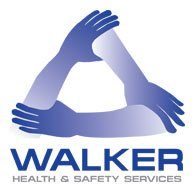EN ISO 20471 clothing, also known as high visibility clothing, is produced for one purpose, which is to enhance visibility and thus to keep people safe when they are working on roads, runways, construction sites or in large warehouses, where vehicles, forklift trucks, aircraft and the like are operating.
Nevertheless, not everyone is aware of how little it takes for safety to be compromised. Even the smallest modifications to clothing can have fatal consequences. So far, too often, people make mistakes when dressing themselves or their employees.
All EN ISO 20471 clothing is certified in classes from 1-3 based on how visible the clothing is.
Depending on the nature of the job and the speed of traffic around the employee, the Danish Working Environment Authority requires the use of certified visible clothing on one of these classes.
If you make just the slightest modification to part of the clothing, it will no longer provide optimal protection.
This can be fatal!
We have therefore collected a list of the mistakes most commonly made by people, and what you should bear in mind when your work requires you to be particularly visible.
1. The Jacket is removed
All of your clothing must meet the requirements in order to be approved. If, for example, you remove your jacket and walk around in a t-shirt, you lose your visibility. You are therefore no longer certified in your safety class.
2. Work clothing gets too dirty
Too much dirt on the fluorescent areas of the clothing reduces visibility. This makes it more difficult to see you, so your clothing no longer meets the applicable safety requirements.
3. Trousers are tucked into boots
A common sight is for people to tuck their trousers into their boots, either because the trousers are a little bit too long or because they prefer it that way. This is, however, not appropriate as the boots can easily cover reflexes, which then lose their effect.
4. Clothing washed incorrectly
If you wash the clothing yourself there is a greater risk that it is washed incorrectly, which damages both reflexes and fluorescent areas, reducing the safety effect. The clothing can be damaged by the temperature, detergent or other textiles in the washing machine. Companies should ideally have a professional laundry solution, to make sure that employees clothing is washed correctly, and therefore still meets the standards in safety classes after washing.
5. The safety of the clothing is not checked on an ongoing basis
The function and the safety effects of the clothing must be checked in order to make sure that it is still good enough. When the clothing is washed in a professional laundry, it is checked and if necessary new reflexes are applied in order to extend the useful life of the clothing.
6. Shirt hanging over the trousers
Clothing must be worn as intended. This means that if there is fluorescent material around the lining or the pockets on the clothing, it must be visible all the time. You must therefore not let your shirt hang over the trousers and cover the colour. This causes the clothing to lose it’s full effect and it’s certification.
7. Holes appear in the clothing
The clothing must always be intact. Even a small hole in your trousers or a logo sewn on can remove some of the fluorescent material. This means that the clothing may possibly not meet the standard and is no longer certified in it’s class.
What ‘Class’ does your job require?
- Class 1 reflective clothing: If the surrounding traffic is driving at approx 30km/h or less.
- Class 2 reflective clothing: If the surrounding traffic is driving at between approx 30 and 60km/h.
- Class 3 reflective clothing: If the surrounding traffic is driving at over approx 60km/h.
Contact Walker Health and Safety Services Limited if you require advice.









